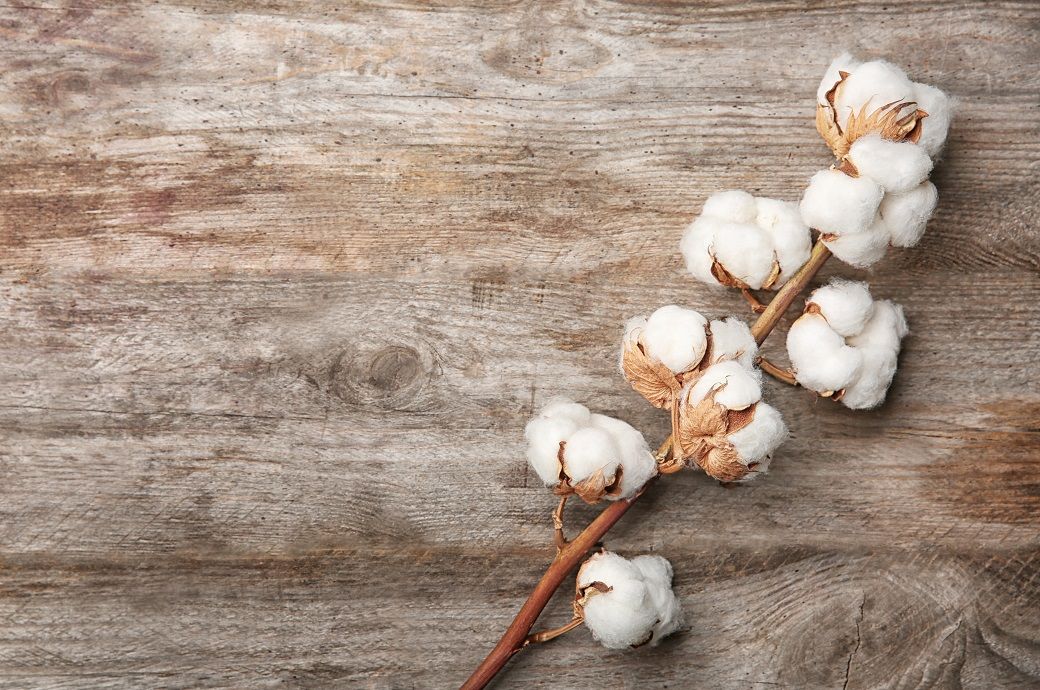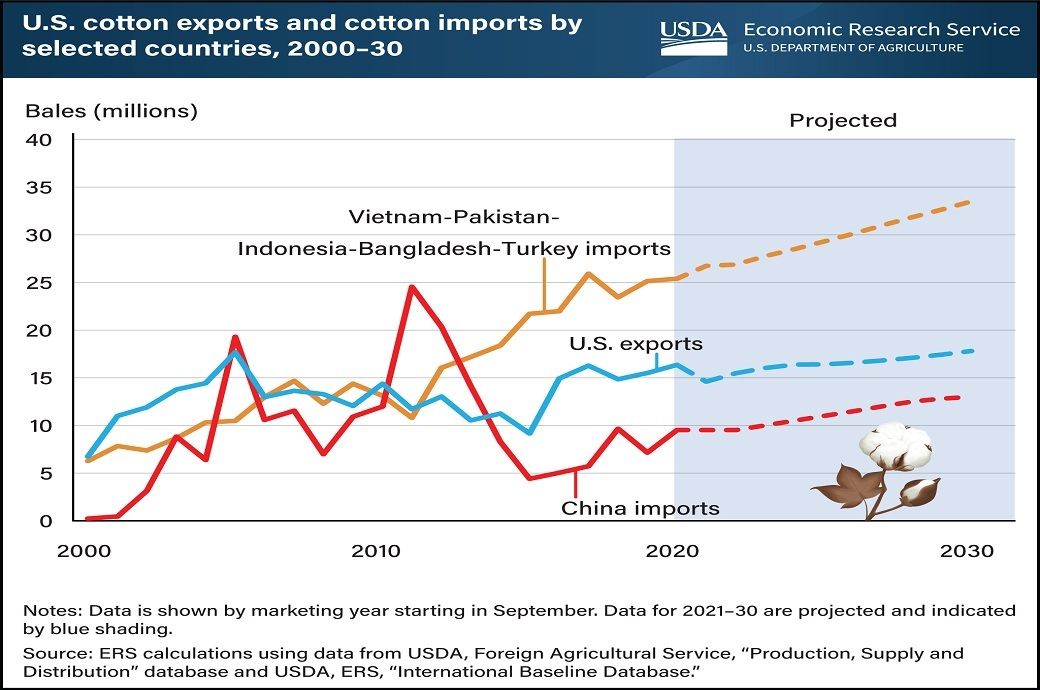
Meanwhile, competing countries, including Vietnam, Pakistan, Indonesia, Bangladesh, and Turkey, expanded their textile industries and boosted cotton imports over the same period, according to a report by the Economic Research Service, US Department of Agriculture (USDA). These countries’ combined imports now exceed China’s volume of cotton imports. This increasing geographic diversification of global cotton demand has helped US cotton exports to remain relatively robust despite volatility in China’s imports over the past decade.

Growth in textile production outside of China supports the USDA projection that US cotton exports will rise by about 1.4 million bales between 2021–30, added the report.
USDA also projects that combined cotton imports by Vietnam, Pakistan, Indonesia, Bangladesh, and Turkey will rise by 8.1 million bales from 2021 to 2030 while China’s imports will rise by a more modest 3.5 million bales. In 2030, China is forecast to account for 24 per cent of total global cotton imports, while the other five destinations are projected to account for 47 per cent of world cotton imports.
Soon after China joined the World Trade Organisation in 2001, the nation’s textile manufacturers had become the world’s leading importers of cotton.
ALCHEMPro News Desk (NB)
Receive daily prices and market insights straight to your inbox. Subscribe to AlchemPro Weekly!